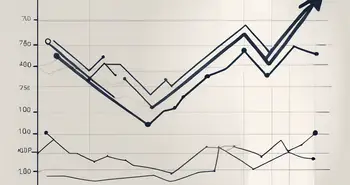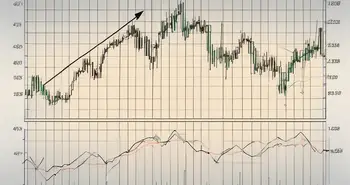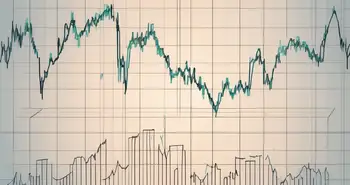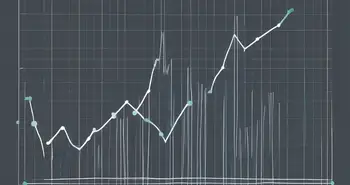Understanding the Average Directional Index: A Comprehensive Guide

As an experienced trader, I can't stress enough the importance of understanding the Average Directional Index (ADX) in your trading strategy. The ADX is a powerful technical indicator that can provide valuable insights into the strength and direction of a trend. In this comprehensive guide, I will take you through everything you need to know about the ADX, from its definition to its practical application in trading.
Introduction to the Average Directional Index
The Average Directional Index (ADX), developed by J. Welles Wilder Jr., is a popular technical indicator used by traders to measure the strength of a trend. It is not only useful for identifying trends but also for determining when to enter or exit a trade. The ADX provides valuable insights into the market, allowing traders to make informed decisions based on the strength of the trend.
Before delving into the details of the ADX, let's first understand what it is all about. The ADX measures the magnitude of a trend regardless of its direction. It ranges from 0 to 100, with higher values indicating a stronger trend. This indicator consists of three lines: the ADX line, the +DI line (Positive Directional Indicator), and the -DI line (Negative Directional Indicator). The +DI and -DI lines show the strength of upward and downward trends, respectively.
What is the Average Directional Index?
The Average Directional Index is a powerful tool that provides traders with insights into the strength of a trend. It helps them determine whether a trend is strong enough to warrant entering or exiting a trade. By measuring the magnitude of a trend, the ADX eliminates the need to rely solely on the direction of the trend. This is particularly useful in volatile markets where trends can change rapidly.
The ADX is calculated using a series of mathematical calculations that take into account the highs, lows, and closing prices of a given period. These calculations result in a value that represents the strength of the trend. The ADX line itself represents the overall strength of the trend, while the +DI and -DI lines provide additional insights into the upward and downward trends, respectively.
Importance of the Average Directional Index in Trading
The Average Directional Index is an essential tool for traders as it helps them make more informed trading decisions. By understanding the strength of a trend, traders can determine whether it is a good time to enter or exit a trade. A high ADX value suggests a strong trend, indicating a higher likelihood for the trend to continue. This can be a signal for traders to enter a trade and ride the trend for potential profits.
On the other hand, a low ADX value indicates a weak trend or a ranging market. In such cases, it is advisable for traders to exercise caution and avoid making significant trading decisions. A low ADX value suggests that the market is not exhibiting a clear trend, making it difficult to predict its future direction. Traders may choose to wait for a stronger trend to develop before entering a trade.
Furthermore, the ADX can also be used in conjunction with other technical indicators to confirm trading signals. For example, if the ADX indicates a strong upward trend, traders can look for additional confirmation from other indicators, such as moving averages or oscillators, before making a trading decision.
In conclusion, the Average Directional Index is a versatile tool that provides valuable information to traders. By understanding the strength of a trend, traders can make more informed decisions on whether to enter or exit a trade. Whether used alone or in combination with other indicators, the ADX is a valuable tool in a trader's arsenal.
The Mathematics Behind the Average Directional Index
To fully grasp the ADX, it's important to understand how its values are calculated. Let's dive into the mathematics behind this powerful indicator.
Calculating the Positive Directional Movement
The Positive Directional Movement (+DM) is a measure of upward price movement. It compares today's high price with the high price of the previous day. If today's high is greater, then the difference is recorded as +DM. Otherwise, it is recorded as zero. The +DM values are then smoothed over a specific period to get a more accurate reading.
Understanding the Negative Directional Movement
Similar to the +DM, the Negative Directional Movement (-DM) measures downward price movement. It compares today's low price with the low price of the previous day. If today's low is less, then the difference is recorded as -DM. Otherwise, it is recorded as zero. Again, the -DM values are smoothed over a specific period to obtain reliable data.
How to Determine the Average Directional Index Value
The Average True Range (ATR) is used to smooth the +DM and -DM values before calculating the ADX. The ATR measures the volatility of a stock or market, providing a range within which the prices are moving. Combining the smoothed +DM and -DM, the ADX is calculated by dividing the absolute difference between the two by the sum of the two values, multiplied by 100.
Interpreting the Average Directional Index
Now that we understand the mathematics behind the ADX, let's explore how to interpret its values and use them to our advantage in trading.
What Does a High ADX Value Mean?
A high ADX value, generally above 25, suggests a strong trend. This indicates that the market is trending strongly, either upward or downward. Traders can use this information to seek opportunities to enter or ride the trend.
What Does a Low ADX Value Mean?
A low ADX value, typically below 20, suggests a weak trend or a ranging market. This means that there is no clear direction in the market, making it challenging to make profitable trades based on trend-following strategies. It's advisable to exercise caution and consider alternative trading strategies, such as mean reversion or range trading, in such market conditions.
Using the Average Directional Index in Trading Strategies
Now that we understand how to interpret the ADX, let's explore how it can be integrated into various trading strategies to enhance decision-making.
Combining ADX with Other Technical Indicators
The ADX can be a powerful tool when combined with other technical indicators. For example, traders often use the ADX in conjunction with moving averages to confirm trends or filter out false signals. By analyzing the ADX alongside other indicators, you can increase the probability of making successful trades.
Timing Trades with the ADX
Timing is crucial in trading, and the ADX can help you identify opportune moments to enter or exit a trade. For instance, traders may look for a rising ADX to confirm the beginning of a new trend before initiating a trade. Additionally, the ADX can be used to fine-tune exit strategies by indicating potential trend reversals or weakening trends.
Common Mistakes to Avoid When Using the Average Directional Index
While the ADX can be an invaluable tool in your trading arsenal, it's essential to be aware of common pitfalls to avoid. By knowing these mistakes, you can maximize the effectiveness of the ADX and improve your overall trading performance.
Misinterpreting ADX Values
One common mistake is misinterpreting ADX values. Remember that the ADX measures the strength of a trend and not its direction. Hence, it's crucial to analyze the overall market context and use additional technical analysis tools to confirm the direction of the trend before making trading decisions.
Overreliance on the ADX
While the ADX is a powerful indicator, it shouldn't be viewed as a standalone solution for trading. It's advisable to consider the ADX in conjunction with other indicators and market analysis techniques to increase the probability of success. Diversifying your analysis approach can provide a more comprehensive view and help you make well-informed trading decisions.
FAQ
Q: What is the Average Directional Index?
A: The Average Directional Index (ADX) is a technical indicator used to measure the strength and direction of a trend. It provides valuable insights into whether the market is trending strongly or if it is entering a ranging phase.
Q: How is the ADX calculated?
A: The ADX is calculated by first calculating the +DM (Positive Directional Movement) and -DM (Negative Directional Movement) values. These values are then smoothed using an Average True Range (ATR) calculation. The ADX is obtained by dividing the absolute difference between the smoothed +DM and -DM values by their sum, multiplied by 100.
Q: How can I use the ADX in my trading strategy?
A: The ADX can be utilized in various ways. You can use it to confirm trends, time your trades, or even combine it with other technical indicators to increase accuracy. However, it's crucial to remember that the ADX should not be solely relied upon and should be considered alongside other market analysis techniques.
Q: What should I do if the ADX value is low?
A: A low ADX value indicates a weak trend or a ranging market. In such cases, it's advisable to exercise caution and consider alternative trading strategies, such as mean reversion or range trading.
Q: Can the ADX be used with other technical indicators?
A: Absolutely! The ADX can be used in combination with various technical indicators, such as moving averages, oscillators, or volume-based indicators. By integrating the ADX with other tools, you can obtain a more robust trading strategy and increase the likelihood of successful trades.
By understanding the Average Directional Index and its various applications, you can enhance your trading skills and make more well-informed decisions. Remember, trading is a journey of continuous learning and adaptation, and the ADX can be an invaluable companion on your trading path.
Ready to put your knowledge of the Average Directional Index to the test? Join Morpher, the revolutionary trading platform that's changing the game with blockchain technology. With Morpher, you can trade a variety of asset classes, from stocks and cryptocurrencies to unique markets like NFTs and sneakers, all with zero fees and infinite liquidity. Whether you're looking to invest fractionally with as little as $1, short sell without interest fees, or leverage your trades up to 10x, Morpher offers a safe, innovative, and user-centric trading experience. Don't miss out on the opportunity to transform your trading strategy. Sign Up and Get Your Free Sign Up Bonus today and start trading the smart way!

Disclaimer: All investments involve risk, and the past performance of a security, industry, sector, market, financial product, trading strategy, or individual’s trading does not guarantee future results or returns. Investors are fully responsible for any investment decisions they make. Such decisions should be based solely on an evaluation of their financial circumstances, investment objectives, risk tolerance, and liquidity needs. This post does not constitute investment advice.

Painless trading for everyone
Hundreds of markets all in one place - Apple, Bitcoin, Gold, Watches, NFTs, Sneakers and so much more.

Painless trading for everyone
Hundreds of markets all in one place - Apple, Bitcoin, Gold, Watches, NFTs, Sneakers and so much more.









